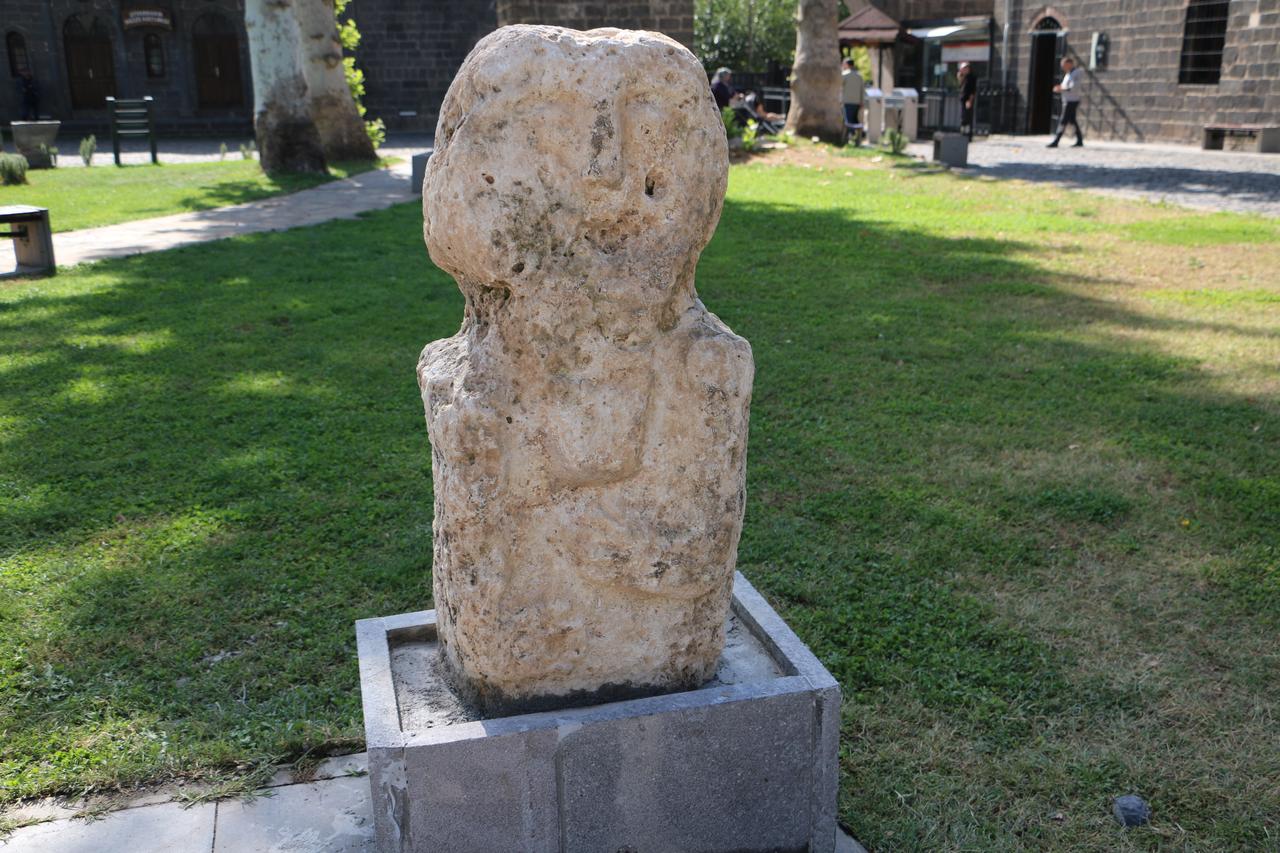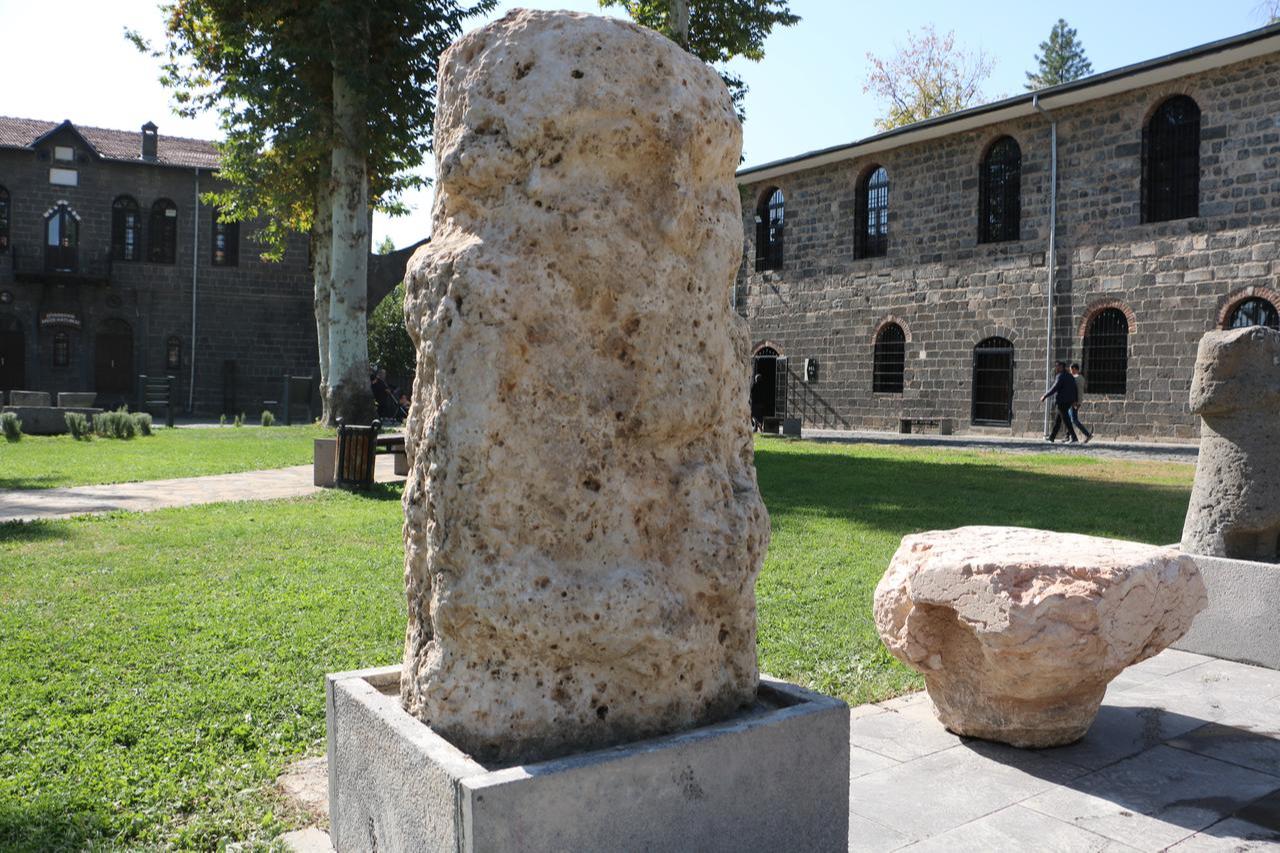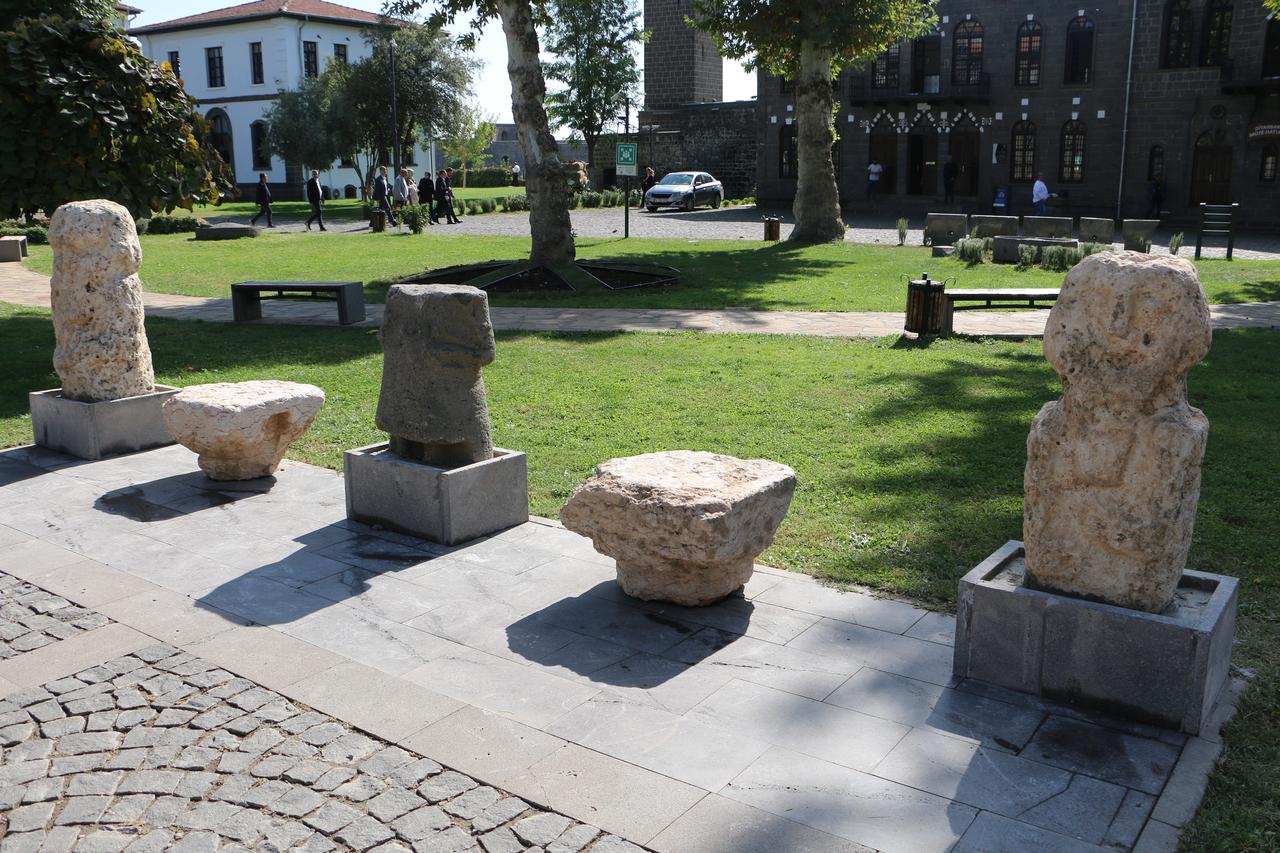
Two limestone statues of King Sargon, regarded as the first Akkad known ruler, have been unveiled at a museum in southeastern Türkiye.
The sculptures are part of the “Road of Civilizations” project, which highlights ancient stone artifacts from Mesopotamian history.

The exhibition is hosted by the Diyarbakir Museum, one of Türkiye’s oldest cultural institutions.
Acting Director Mujdat Gizligol said the museum, founded in 1934, holds more than 36,000 artifacts, though only about 1,600 are currently exhibited. “We have a large garden, so we decided to place some of the stone works outside for everyone to see,” Gizligol said.
The Road of Civilizations project includes nine sculptures positioned throughout the museum garden. Among them are two limestone statues of Sargon, featuring distinct facial details. “When we compare the proportions and facial traits, they clearly point to Sargon,” Gizligol explained.

Gizligol described Sargon as a key figure in early Mesopotamian civilization.
He was not born Sumerian but rose to power after being found as a baby in a basket floating on a river and later raised in the royal court of Kish. He began as a cupbearer before conquering all Sumerian city-states and uniting them under a single rule.
Sargon’s empire extended from the Persian Gulf to the Mediterranean and from central Anatolia to the region of present-day Palestine. His reign marked the transformation of the ancient Near East from independent city-states to the first organized empire in recorded history.
“History regards Sargon as the first great king,” Gizligol said. “He carried out military and trade reforms that influenced later rulers, including Akkadian, Assyrian, and Babylonian kings who followed his model.”
The newly arranged exhibition invites visitors to explore how Sargon’s image continues to represent the origins of political power and artistic expression in early civilization.